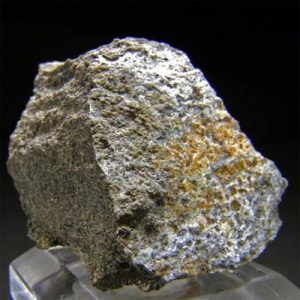Cymrite
Cymrite is just a barium that is rare mineral that is roughly comparable to hydrated Celsian and kinds in barium-rich rocks under conditions of low grade metamorphism. Cymrite was described from material collected in 1944 by Dr. A.W. Groves and Dr. W. Campbell Smith during the Benallt manganese mine, near Rhiw, Llanfaelrhys, Lleyn Peninsula, Gwynedd, Wales, UK. Cymrite is colorless when pure but commonly dark light or green to dark brown as a result of impurities. It is translucent with vitreous to luster that is pearly a Moh’s hardness of 2-3. Cymrite may show greenish fluorescence that is white UV light.
Cymrite is called from Cymru (pronounced kumry), the Welsh title for Wales, the locality of its breakthrough. The word Cymru is descended from the Old Brythonic term combrogi, meaning fellow-countrymen. Old Brythonic had been an ancient language that is celtic in Britain.
Cymrite distribution: in the Benallt mine, Rhiw, Lleyn Peninsula, Wales. From Långban, Värmland, Sweden. In the USA, from Ruby Creek, Brooks Range, Alaska, and near Pacheco Pass, San Benito County, Ca. On Andros Island, Cyclades Islands, Greece. From the Lianyuan-Shaoyang area, Hunan Province, China. In the Shiramaru mine, Tokyo Prefecture, Japan. At Northwest Nelson, Southern Island, New Zealand. In the Saureisk deposit, Polar Ural Mountains, and near Lake Baikal, eastern Siberia, Russia. From the Ebony Rock and Hotazel mines, near Kuruman, Cape Province, South Africa. At Kalugeri Hill, Babuna River, Jakupica Mnts, 15 kilometre NW of Nežilovo, Veles, Republic of Macedonia. The quantity of other occurrences is known.
| Category: | Phyllosilicate |
| Chemical Formula: | BaAl2Si2(O,OH)8 • H2O |
| Hydrated Barium Aluminum Silicate Hydroxide | |
| Molecular Weight: | 393.47 gm |
| Composition: | Barium | 34.90 % | Ba | 38.97 % | BaO |
| Aluminum | 13.71 % | Al | 25.91 % | Al2O3 | |
| Silicon | 14.28 % | Si | 30.54 % | SiO2 | |
| Hydrogen | 0.51 % | H | 4.58 % | H2O | |
| Oxygen | 36.60 % | O | |||
| 100.00 % | 100.00 % | = TOTAL OXIDE |
| Crystallography: | Monoclinic – Sphenoidal |
| Crystal Habit: | As thin pseudohexagonal platelets and prisms, to 7 mm; also fibrous. |
| Twinning: | None |
| Cleavage: | Perfect on {001}, imperfect on {110} |
| Fracture: | Irregular/Uneven |
| Tenacity: | Brittle |
| Moh’s Hardness: | 2.0 – 3.0 |
| Density: | 3.413 (g/cm3) |
| Luminescence: | Fluorescent; greenish white fluorescence under UV |
| Radioactivity: | Not Radioactive |
| Color: | Colorless when pure; commonly dark green or brown due to inclusions of alteration products |
| Transparency: | Translucent |
| Luster: | Vitreous to silky |
| Refractive Index: | 1.611 – 1.621 Biaxial ( – ), pseudouniaxial |
| Birefringence: | 0.010 |
| Dispersion: | Relatively strong |
| Pleochroism: | None |


